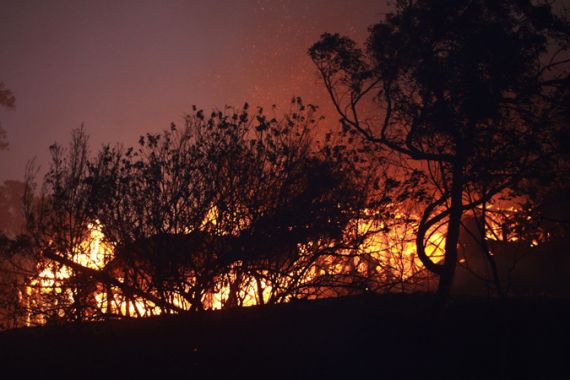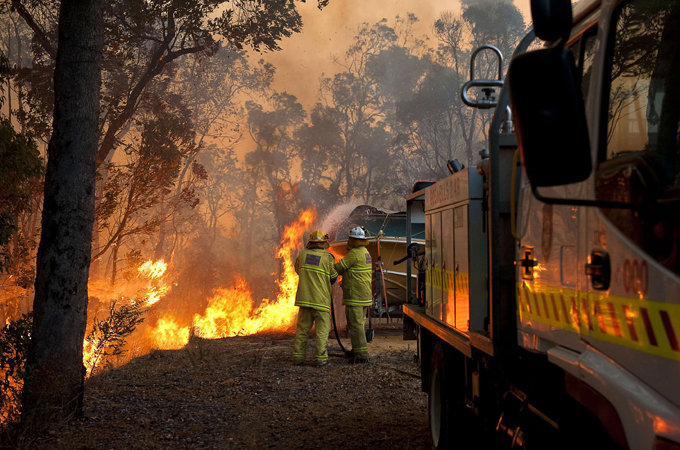Bushfire damages Australia homes
Daylight reveals trail of damage by wildfires in Western Australia as residents wait to return to their homes.

 |
| The fast spreading fires have razed 4,000 acres of forested land despite the efforts of firefighters [Reuters] |
A wildfire that tore across the outskirts of Perth in western Australia over the weekend has destroyed at least 41 homes and damaged another 19, authorities said.
Craig Hynes, the chief operations officer of Western Australia’s Fire and Emergency Services Authority (FESA), told reporters on Monday the fire caused damage in Roleystone and the nearby community of Kelmscott, despite the efforts of 200 firefighters.
Keep reading
list of 4 itemsAfter the Hurricane
World’s coral reefs face global bleaching crisis
Why is Germany maintaining economic ties with China?
He said the tally could rise as a survey of the scorched area continued.
One firefighter was injured and several people were treated for smoke inhalation.
“The pleasing thing is that there’s been no serious injuries or fatalities,” Hynes said.
Residents who were evacuated from the path of the blaze on Sunday have not yet been allowed to return to their homes due to the continuing fire danger.
Further north, in the Swan Valley district, some 150 firefighters using water-bombing helicopters and trucks had contained another fire by early Monday.
Alan Gale, a FESA spokesman, said that there was no property lost there.
The two blazes are reported to have razed 4,000 acres of forested land to the north and southeast of Perth since Saturday.
“Conditions are still windy, but nowhere near as bad as yesterday,” Gale said.
About 100 people were told to evacuate their homes as authorities tried to contain that blaze, which started Saturday night and had scorched about 3,000 acres of forest land by Monday.
The Roleystone fire was accidentally started when a man using an electric grinder in his backyard ignited dry grass with sparks, FESA said in a statement.
The other fire began when a tree branch that was blown down by strong winds hit electrical transmission infrastructure, it said.
February is the last month of summer in Australia and also marks the height of both the monsoon season in the tropical north and the riskiest period for wildfires.